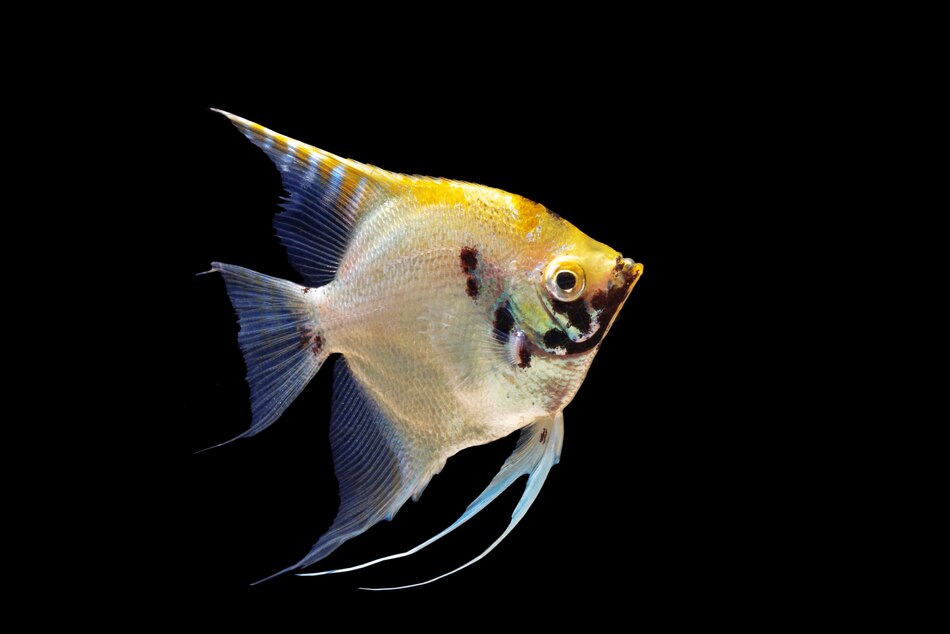Angelfish (Pterophyllum) are elegant, freshwater fish known for their triangular bodies, long flowing fins, and peaceful demeanor. They belong to the cichlid family and are native to the slow-moving rivers and streams of the Amazon basin and other South American waterways.
Physical Characteristics:
Angelfish are recognized for their unique body shape and striking patterns.
- Size:
Typically, Angelfish grow to about 4–6 inches (10–15 cm) in body length, with fins extending up to 8 inches (20 cm) tall. - Colors and Patterns:
Angelfish come in a variety of colors, including silver, black, gold, and marbled patterns. Selective breeding has produced even more varieties, such as koi, zebra, and albino Angelfish. - Lifespan:
With proper care, Angelfish can live for 8–10 years in captivity.
Behavior and Temperament:
- Temperament:
Angelfish are generally peaceful but can show mild aggression, especially during breeding or territorial disputes. - Social Behavior:
They are best kept in small groups (4–6 fish) in spacious tanks. While they are compatible with many community fish, avoid housing them with very small species like Neon Tetras, which they may see as prey.
Habitat and Care:
Angelfish thrive in aquariums that replicate their natural environment.
- Tank Size:
A minimum of 20 gallons is required for a pair, but a 40-gallon or larger tank is ideal for a group. - Water Conditions:
- Temperature: 24°C–28°C (75°F–82°F)
- pH: Slightly acidic to neutral (6.5–7.5)
- Hardness: Soft to moderately hard water.
- Tank Setup:
They prefer tanks with tall plants, driftwood, and open swimming spaces. Subdued lighting is recommended to mimic their natural habitat. - Diet:
Angelfish are omnivores and thrive on a diet of high-quality flakes or pellets supplemented with live or frozen foods like brine shrimp, bloodworms, and daphnia.
Breeding:
Angelfish are relatively easy to breed in captivity with the right conditions.
- Pair Bonding:
Angelfish form monogamous pairs and choose their own mates when kept in groups. - Spawning:
They lay eggs on flat surfaces like broad leaves or smooth rocks. Both parents guard the eggs and fry. The eggs hatch in 2–3 days, and the fry become free-swimming within a week.
Varieties:
Selective breeding has produced numerous Angelfish varieties, each with unique colors and fin shapes. Some popular types include:
- Silver Angelfish: The classic variety with vertical black stripes.
- Koi Angelfish: White with orange and black markings, resembling a koi fish.
- Zebra Angelfish: Striped patterns resembling zebra markings.
- Black Veil Angelfish: Solid black with long, flowing fins.
- Marbled Angelfish: A mix of black, white, and gold colors in a marbled pattern.
Tank Mates:
Angelfish can coexist with many peaceful species, such as:
- Corydoras Catfish
- Gouramis
- Larger Tetras (like Cardinal or Rummy Nose)
- Dwarf Cichlids
Avoid aggressive or fin-nipping species, as well as very small fish that may be seen as prey.
Popularity:
Angelfish are one of the most beloved aquarium fish due to their graceful appearance, relatively easy care, and engaging behaviors. They make an excellent choice for both beginner and experienced aquarists.


